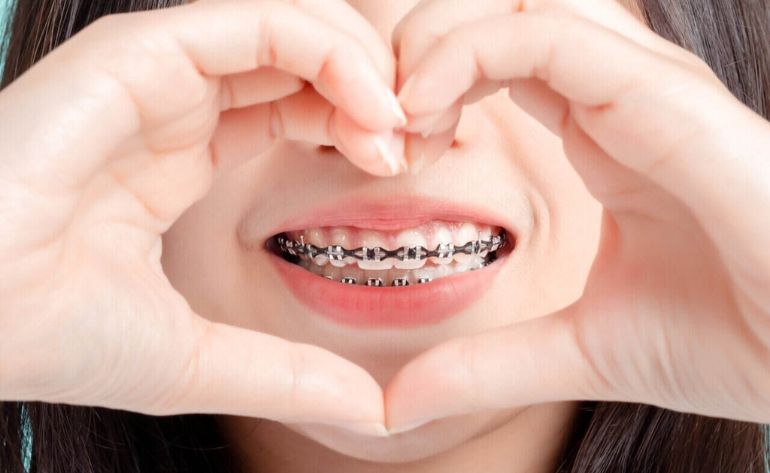Braces Treatment
Orthodontics has evolved significantly in recent times. Whilst it was once an option just offered to children, nowadays orthodontics is widely used by adults too. Orthodontics can be used to correct anything from minor cosmetic issues like slightly overlapping teeth to serious overcrowding issues causing pain or difficulty in cleaning. There are many orthodontic options available; many of them short term, 4 – 6 months, depending on your requirements. To know more about braces treatment in sinhagad road, Dattawadi Pune, visit our clinic
Quick Straight Teeth: A Discreet, Simple Solution
This advanced system utilizes clear, removable aligners to shift teeth into the desired position. It is ideal for crowded or crooked teeth, closing gaps and aligning your bite. The aligners are switched out every two weeks, moving your teeth closer to perfection.

Traditional Braces
Still the most widely used method for a straight smile; traditional braces are used for predictable final results. Brackets are attached to the teeth, connected by wires to improve the appearance of teeth, improve your bite and correct underbites, overbites and crossbites.
Types of Braces
Metal Braces:
Metal braces are very noticeable when you smile, laugh, or talk. This can make people feel very self-conscious. Those feelings can be even greater if you have an important event coming up, like a job interview or a wedding. Ceramic braces are meant to be less noticeable, and so a good alternative to more traditional braces.
Ceramic Braces:
Ceramic Braces have brackets made of ceramic or porcelain or in some cases plastic. The brackets can be clear or else colored to be the same color as your teeth. Thus, they usually blend in with your teeth much better than metal braces. People with lighter teeth do fine with clear brackets, but if you have darker teeth, having colored braces might be a better option.
It used to be that only the brackets for these braces were ceramic, while the wire itself was made of metal. These days clear wires are available as well, making these braces even less visible.
Short-term Orthodontics
Get stunning, quick results in just 4-9 months with short-term orthodontics. This purely cosmetic treatment moves your visible “smile teeth” without altering your bite. It uses clear, discreet brackets and wires that match the color of your teeth. It’s faster and less expensive than options such as aligner therapy, veneers or traditional braces.
Early Intervention Orthodontics
To correct structural problems in children generally under the age of 14, these can be corrected to prevent further issues from occurring.
Early orthodontics are used to expand the dental arches, making room for adult teeth, eliminating discrepancies between the upper and lower jaw, improving facial shapes or breathing airways and diminishing the chance of TMJ problems.
Why Visit Us?
Our patients choose our dental team for their orthodontic needs for numerous reasons:
Customized orthodontics. With many services available, we can help you select which solution is right for you.
Needs are taken care of. At our full-service practice, we handle all your needs at one convenient location.
Experience you’ll benefit from. With decades of combined experience, we’re skilled in achieving the smile you’ve always dreamed of having.


